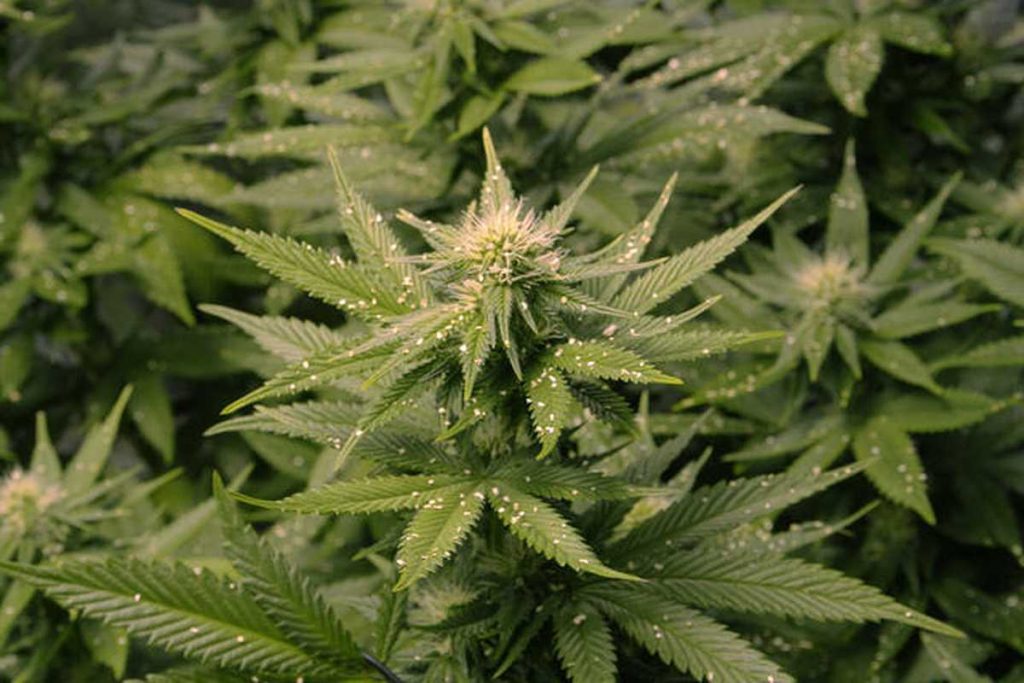The Most Common Bugs, Pests, and Viruses that Affect Cannabis Plants
- Blog
- The Most Common Bugs, Pests, and Viruses that Affect Cannabis Plants
lynette
Growing cannabis can be a rewarding experience, but it comes with its own set of challenges. One of the main difficulties faced by cannabis growers is dealing with various bugs, pests, and viruses. These unwanted guests can damage your plants, reduce yields, and even kill your crops if not managed properly.
In this article, we’re going to look at some of the most common bugs, pests, and viruses that you’ll encounter when growing your own cannabis plants.

Understanding what you’re up against and knowing how to prevent and treat infestations is crucial for a successful harvest.
Without further ado, here are the most common bugs, pests, and viruses that can affect cannabis plants:
Spider mites are tiny, almost invisible pests that can cause significant damage to cannabis plants. They thrive in hot, dry conditions and reproduce quickly, making them tough to control. These mites feed on plant sap, causing leaves to develop yellow spots and eventually die off. You might notice fine webbing on the plants, which is a telltale sign of spider mite infestation.
To deal with them, make sure to keep the growing area clean and maintain humidity levels to deter mites. Introduce natural predators like ladybugs or use organic miticides. Neem oil and insecticidal soaps are also effective treatments.
Aphids are small, soft-bodied insects that come in various colors, including green, black, and yellow. They cluster on the undersides of leaves and stems, sucking sap from the plant and excreting a sticky substance known as honeydew. This honeydew can attract mold, further damaging the plant.
Make sure to regularly inspect your plants and remove any aphids you find by hand or with a strong water spray. Introduce beneficial insects like ladybugs and lacewings. Insecticidal soaps and neem oil can help manage larger infestations.
Whiteflies are tiny, white insects that fly around when disturbed. They feed on plant sap, weakening the plant and causing leaves to yellow and drop. Whiteflies also excrete honeydew, leading to mold growth.
Use yellow sticky traps to catch adult whiteflies. Regularly check the undersides of leaves for eggs and nymphs. Introduce natural predators such as predatory wasps and spiders. Insecticidal soaps and neem oil can be used to control the population.
Thrips are small, slender insects that feed on plant leaves and flowers, causing silver or bronze streaks. They can also transmit plant viruses, compounding the damage they cause.
Keep the growing area clean and remove any plant debris. Use blue sticky traps to monitor and catch thrips. Introduce beneficial insects like predatory mites. Neem oil and insecticidal soaps can help control thrip infestations.
Fungus gnats are small, dark flies that thrive in damp soil. The larvae feed on plant roots, which can stunt growth and make the plants more susceptible to diseases.
Allow the soil to dry out between waterings to reduce gnat populations. Use sticky traps to catch adult gnats. Introduce beneficial nematodes or predatory insects like Hypoaspis miles. You can also treat the soil with a solution of hydrogen peroxide and water to kill larvae.
TMV is a common virus that affects a wide range of plants, including cannabis. It causes leaves to develop a mottled or mosaic pattern of light and dark green. Infected plants may also show stunted growth and reduced yields.
As of now, there is no cure for TMV, so prevention is key. Practice good hygiene by washing hands and tools before handling plants. Avoid smoking tobacco near your plants, as the virus can be transmitted through tobacco products.
Remove and destroy infected plants to prevent the spread of the virus.
HSV causes streaks of yellow or light green on the leaves and can lead to stunted growth and reduced yields. It is spread by insects like aphids and whiteflies.
Control insect vectors to prevent the spread of HSV. Regularly inspect plants for signs of infection and remove any affected plants. Maintain good hygiene practices in the growing area.
CCV is a relatively new virus that can cause mild to severe symptoms, including leaf curling, yellowing, and stunted growth. It is believed to be spread through infected seeds and possibly by insect vectors.
Use certified disease-free seeds to prevent the introduction of CCV. Monitor plants for signs of infection and remove any affected plants. Implement good hygiene practices to reduce the risk of spreading the virus.
To keep your plants pest and virus-free, make sure to follow these tips:
Growing cannabis comes with its own set of challenges, particularly when it comes to managing bugs, pests, and viruses. By understanding the common threats and implementing preventative measures, you can protect your plants and ensure a healthy, bountiful harvest.
Regular inspections, good hygiene practices, and the use of natural predators are key components of effective pest and virus management. With diligence and care, you can overcome these challenges and enjoy the rewards of growing your own cannabis.
© Copyright 2025 Cultivating Homegrown Organic Marijuana